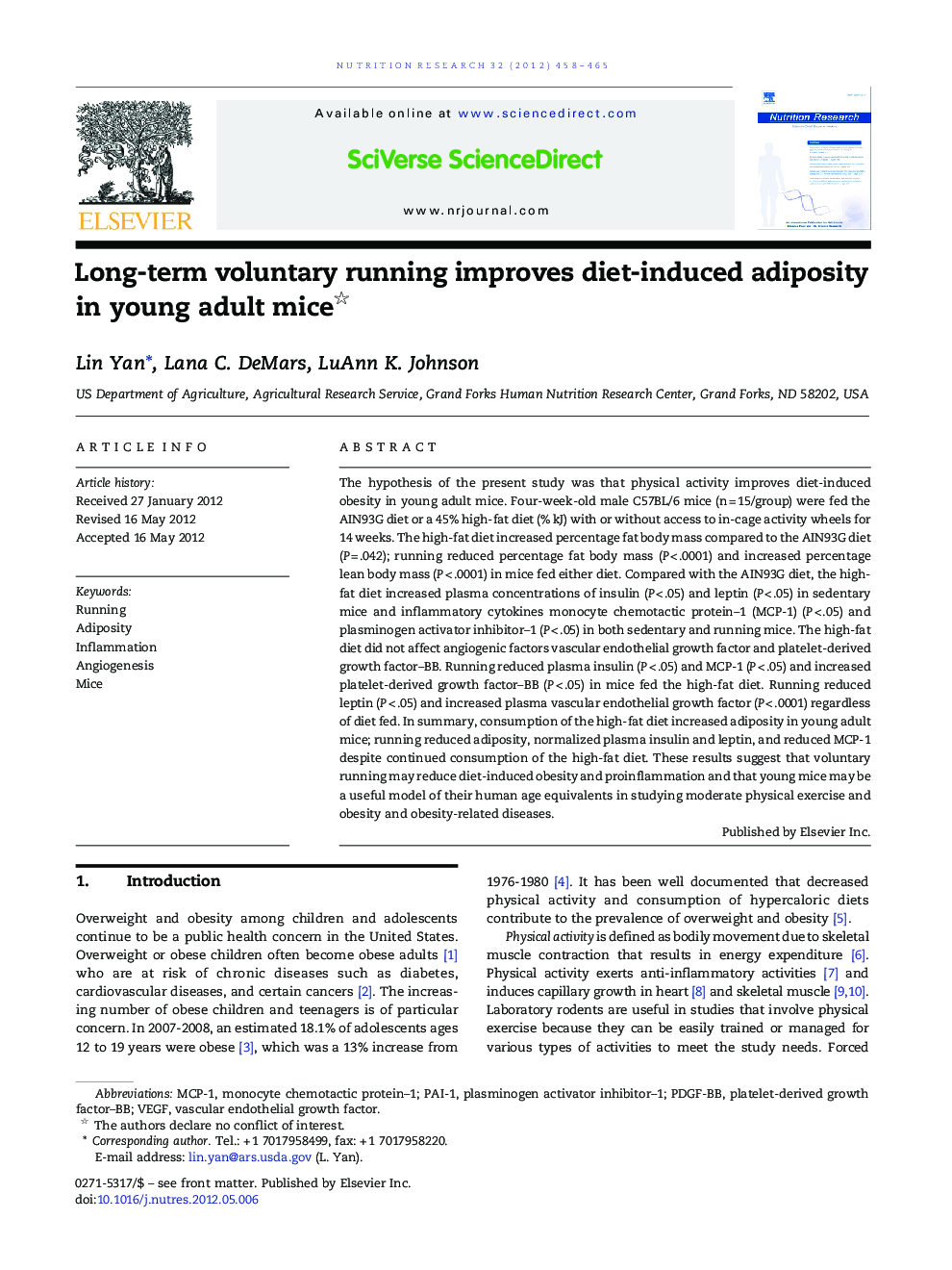| Article ID | Journal | Published Year | Pages | File Type |
|---|---|---|---|---|
| 2809060 | Nutrition Research | 2012 | 8 Pages |
The hypothesis of the present study was that physical activity improves diet-induced obesity in young adult mice. Four-week-old male C57BL/6 mice (n = 15/group) were fed the AIN93G diet or a 45% high-fat diet (% kJ) with or without access to in-cage activity wheels for 14 weeks. The high-fat diet increased percentage fat body mass compared to the AIN93G diet (P = .042); running reduced percentage fat body mass (P < .0001) and increased percentage lean body mass (P < .0001) in mice fed either diet. Compared with the AIN93G diet, the high-fat diet increased plasma concentrations of insulin (P < .05) and leptin (P < .05) in sedentary mice and inflammatory cytokines monocyte chemotactic protein–1 (MCP-1) (P < .05) and plasminogen activator inhibitor–1 (P < .05) in both sedentary and running mice. The high-fat diet did not affect angiogenic factors vascular endothelial growth factor and platelet-derived growth factor–BB. Running reduced plasma insulin (P < .05) and MCP-1 (P < .05) and increased platelet-derived growth factor–BB (P < .05) in mice fed the high-fat diet. Running reduced leptin (P < .05) and increased plasma vascular endothelial growth factor (P < .0001) regardless of diet fed. In summary, consumption of the high-fat diet increased adiposity in young adult mice; running reduced adiposity, normalized plasma insulin and leptin, and reduced MCP-1 despite continued consumption of the high-fat diet. These results suggest that voluntary running may reduce diet-induced obesity and proinflammation and that young mice may be a useful model of their human age equivalents in studying moderate physical exercise and obesity and obesity-related diseases.
